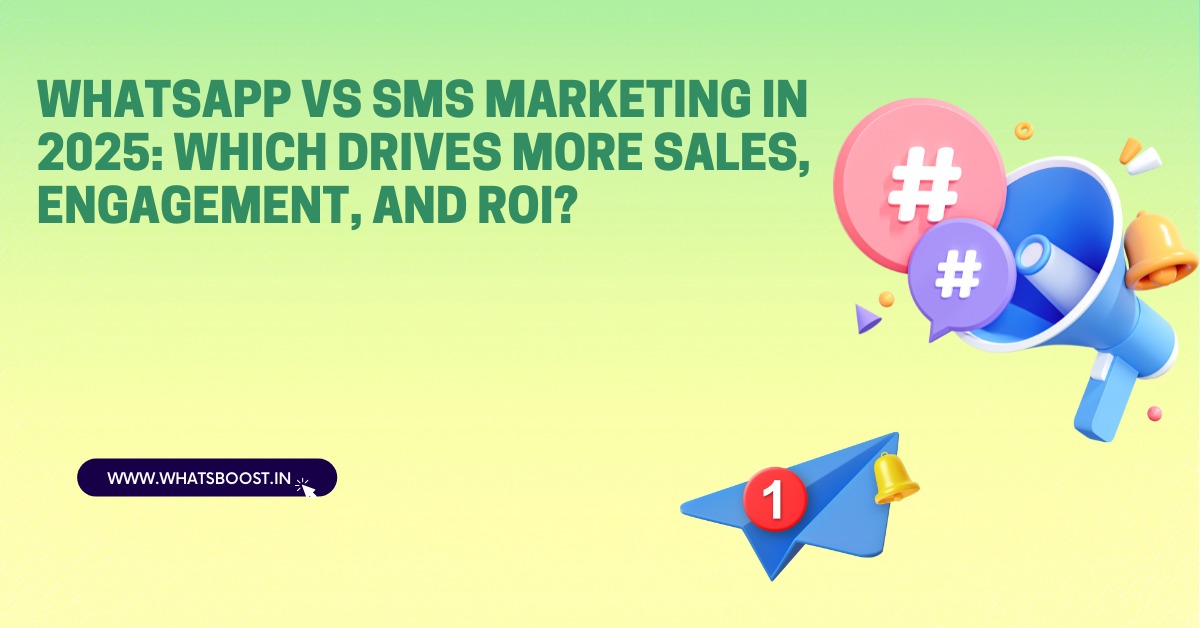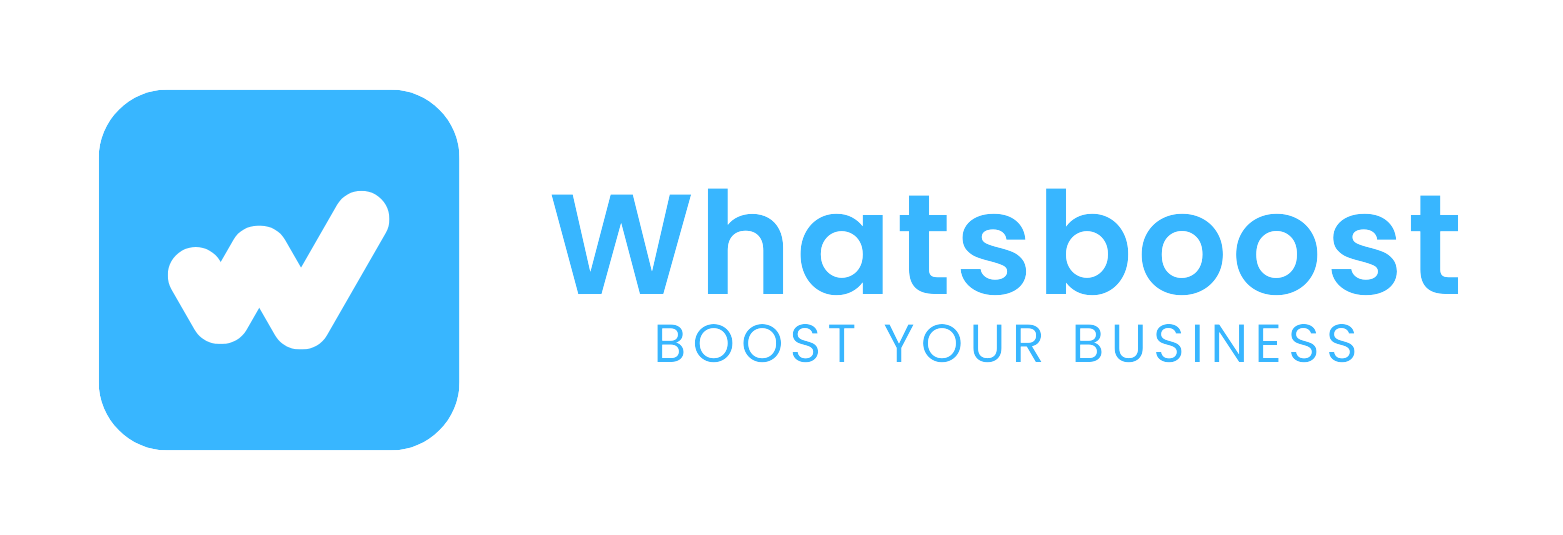
WhatsApp vs SMS Marketing in 2025: Which Drives More Sales, Engagement, and ROI?
Discover the key differences between WhatsApp and SMS marketing in 2025—reach, cost, engagement, compliance, automation, and campaign strategy—with Whatsboost’s expert guide for smarter business growth.
In today’s competitive market, direct messaging remains critical—but choosing the right channel can make or break your campaign outcomes. SMS has long been the staple for updates and alerts, prized for its universal reach across feature phones and remote areas. Meanwhile, WhatsApp marketing has surged ahead, especially with the popularity of the WhatsApp Business API and rich, two-way communications.
After reviewing top industry insights and market data for 2025, this guide will help you decide when, why, and how to deploy each channel—for maximum engagement and ROI.
Quick Comparison: WhatsApp vs SMS—What Sets Them Apart?
Reach and Accessibility
WhatsApp:
Over 3 billion global users, but requires smartphone and internet access.SMS:
Universal coverage—delivers to any active mobile device, no data connection needed.
Engagement Rates
WhatsApp:
98% open rate, 25–50% click-through rate, real-time read receipts, and interactivity.SMS:
High open rates (up to 90%), but lower click-through and reply rates (often below 15%).
Message Formats
WhatsApp:
Send images, video, audio, catalogs, documents, quick replies, CTAs, and interactive flows—with full support for rich media and chatbots.SMS:
Supports plain text only (unless paying extra for MMS), capped at 160 characters—limiting campaign creativity.
Cost & Scalability
WhatsApp:
More affordable for high-volume messaging. No incremental charge for images or videos; scalable via API platforms like Whatsboost.SMS:
Can get costly with international campaigns or multimedia. Pricing varies by carrier, region, and message volume.
Compliance and User Trust
WhatsApp:
End-to-end encryption, strict opt-in policies, sender verification, and prompt anti-spam enforcement.SMS:
Reliant on regional regulations (e.g., TCPA/GDPR), but can be easier to misuse. Privacy standards vary.
User Experience
WhatsApp:
Two-way, conversational, supports customer support and live engagement.SMS:
One-way for most campaigns; replies possible, but rarely used for interactive conversations.
Pros and Cons: When to Use WhatsApp, When to Use SMS
WhatsApp Marketing — Pros
Enables branded, secure two-way conversations
Ideal for sharing coupons, catalogs, event invites, surveys, support, and promotions
Tracks delivery, reads, and engagement with advanced analytics
Drives higher response and conversion rates for digital-first, mobile-savvy audiences
Scales with automation (drip campaigns, chatbots, CRM integrations)
WhatsApp Marketing — Cons
Limited reach in areas without smartphones or reliable internet
Requires business API setup and template approval
Non-opted-in contacts cannot receive broadcasts
SMS Marketing — Pros
Universal coverage (no internet required)
Fast delivery for urgent alerts, authentication codes, or service outages
Readable on any phone, regardless of age or device type
SMS Marketing — Cons
Restricts brand creativity due to text-only format and character limits
Poor support for media, chatbots, or automation
Lower engagement and click-through rates
Sometimes high international or bulk send costs
Choosing the Right Channel for Your Campaign Goals
When to Pick WhatsApp
Targeted promotions, product launches, complex support queries, and relationship-building
Rich media campaigns (photos, videos, personalized catalogs)
Automated onboarding, reminders, feedback collection, or payments
Countries/regions with high mobile internet and WhatsApp adoption
When to Choose SMS
Emergency alerts, critical OTPs, and time-sensitive notifications
Areas where WhatsApp (or internet) is inaccessible or unreliable
Simple transactional messaging or short reminders
For many businesses, a blended approach—using WhatsApp for engagement and SMS as a backup—can provide maximum coverage and flexibility.
New in 2025: The Whatsboost Advantage for WhatsApp Campaigns
Whatsboost replaces old bottlenecks with:
Drag-and-drop template maker for media-rich WhatsApp campaigns
AI-powered segmentation for broadcasts, reminders, and two-way engagement
Full compliance engine (opt-in management, sender verification, analytics)
Integration with CRM, payment systems, and e-commerce flows for smarter automation
Detailed dashboard tracking open, click, and conversation rates in real time
Real-World Scenarios & Tactics: WhatsApp vs SMS
E-commerce Sale:
WhatsApp lets you send product images, direct buy links, and cart reminders, driving measurable purchases. SMS can be used as a fallback for order confirmation in regions with low WhatsApp penetration.Event Registrations:
WhatsApp delivers interactive registration forms and instant reminders to attendees. SMS ensures last-minute alerts reach every phone, including older devices.Customer Support:
WhatsApp enables rich, conversational support and media sharing for troubleshooting. SMS only supports brief instructions or escalation prompts.
Pro Tips for Maximizing Messaging ROI in 2025
Segment your lists by device and connectivity, sending the right message to the right channel
Use WhatsApp broadcast features for promotions, and SMS for critical service notifications
Analyze user response data; optimize timing, message format, and CTA placement
Always respect consent and privacy—especially when switching channels
Embrace automation to save time and improve personalized engagement
Frequently Asked Questions
Q: What’s the average open rate for WhatsApp marketing in 2025?
Open rates still hover near 98%, but conversion depends on content, timing, and user relevance.
Q: Is SMS marketing obsolete?
No—SMS is still vital for urgent alerts and in areas lacking mobile internet. It’s just not ideal for rich engagement.
Q: Can you automate SMS and WhatsApp broadcasts together?
Yes. Many platforms (including Whatsboost) support multi-channel flows, letting you combine campaign power for broad coverage and real-time engagement.
Final Takeaway
In 2025, WhatsApp marketing leads for interactive, media-rich, and deeply personalized campaigns—achieving stronger engagement, brand recall, and sales. SMS remains the reliable fallback for urgent, network-independent communications. The smartest brands combine both, strategically matching message type with channel power.
Ready to upgrade your business messaging? Explore how Whatsboost’s platform lets you create, automate, and analyze campaigns on WhatsApp and SMS for revenue that grows with every send.
